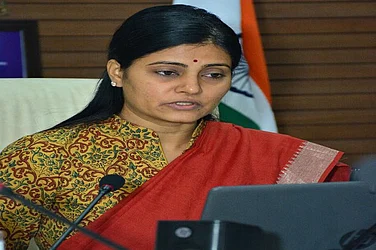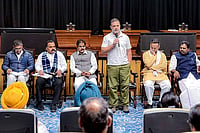In what could mark a turning point in the treatment of severe male infertility, researchers at the Columbia University Fertility Center have reported the world’s first successful pregnancy using an artificial intelligence (AI)-guided sperm recovery method developed in their laboratory.
The achievement, described in The Lancet, offers new hope to men diagnosed with azoospermia — a condition in which semen contains little or no sperm.
Male factors account for nearly 40% of infertility among couples, and within this group, 10-15% of men are affected by azoospermia. “A semen sample can appear totally normal, but under the microscope, it can be a sea of cellular debris, with no sperm visible,” said Zev Williams, senior author of the paper and Director of the Columbia University Fertility Center. “Many couples with male-factor infertility are told they have little chance of having a biological child.”
Men with azoospermia often undergo surgical extraction of sperm from the testes — a procedure that can be painful, costly, and not always successful. Alternatively, lab technicians manually inspect processed semen samples under microscopes — a time-consuming and expensive approach that can also damage fragile sperm cells.
“The field has really been challenged to find a better way to identify and retrieve viable sperm cells in men with exceedingly low sperm counts,” Dr. Williams noted.
To address this, a multidisciplinary team at Columbia developed the Sperm Tracking and Recovery (STAR) system — an AI-driven method combining advanced imaging, microfluidics, and robotics. “Our team brought together experts in imaging, reproductive science, and microfluidic technology to tackle every stage of the problem,” explained Hemant Suryawanshi, assistant professor of reproductive sciences and lead project investigator.
The STAR method uses high-powered imaging to scan millions of frames from a semen sample — more than 8 million images in under an hour. AI algorithms then identify the presence of sperm cells, and a custom-built microfluidic chip isolates the exact portion of the sample containing them. A robotic arm, operating within milliseconds, retrieves the viable sperm for use in in-vitro fertilisation (IVF) or for cryopreservation.
The technology was recently tested on a patient who had been attempting to conceive for nearly two decades. After numerous failed IVF cycles and two surgical sperm extractions, STAR was employed to scan his 3.5 mL semen sample. Within two hours, the system identified two viable sperm cells from 2.5 million images. These were used to create two embryos, resulting in a successful pregnancy.
“You only need one healthy sperm to create an embryo,” Dr. Williams said, underscoring the potential of the technology to transform fertility treatment.
Though the results come from a single case, researchers say the outcome demonstrates the feasibility of AI-assisted sperm detection in overcoming long-standing barriers in male infertility. Larger clinical studies are already underway to test STAR’s performance across broader patient populations.
The research letter, titled “First clinical pregnancy following AI-based microfluidic sperm detection and recovery in non-obstructive azoospermia,” was published online in The Lancet on October 31.
The study was authored by Hemant Suryawanshi, Laura Gemmell, Stephanie Morgan, George Koustas, Robert W. Prosser, Ryan Fu, Eric Forman, and Zev Williams, all from Columbia University.


























